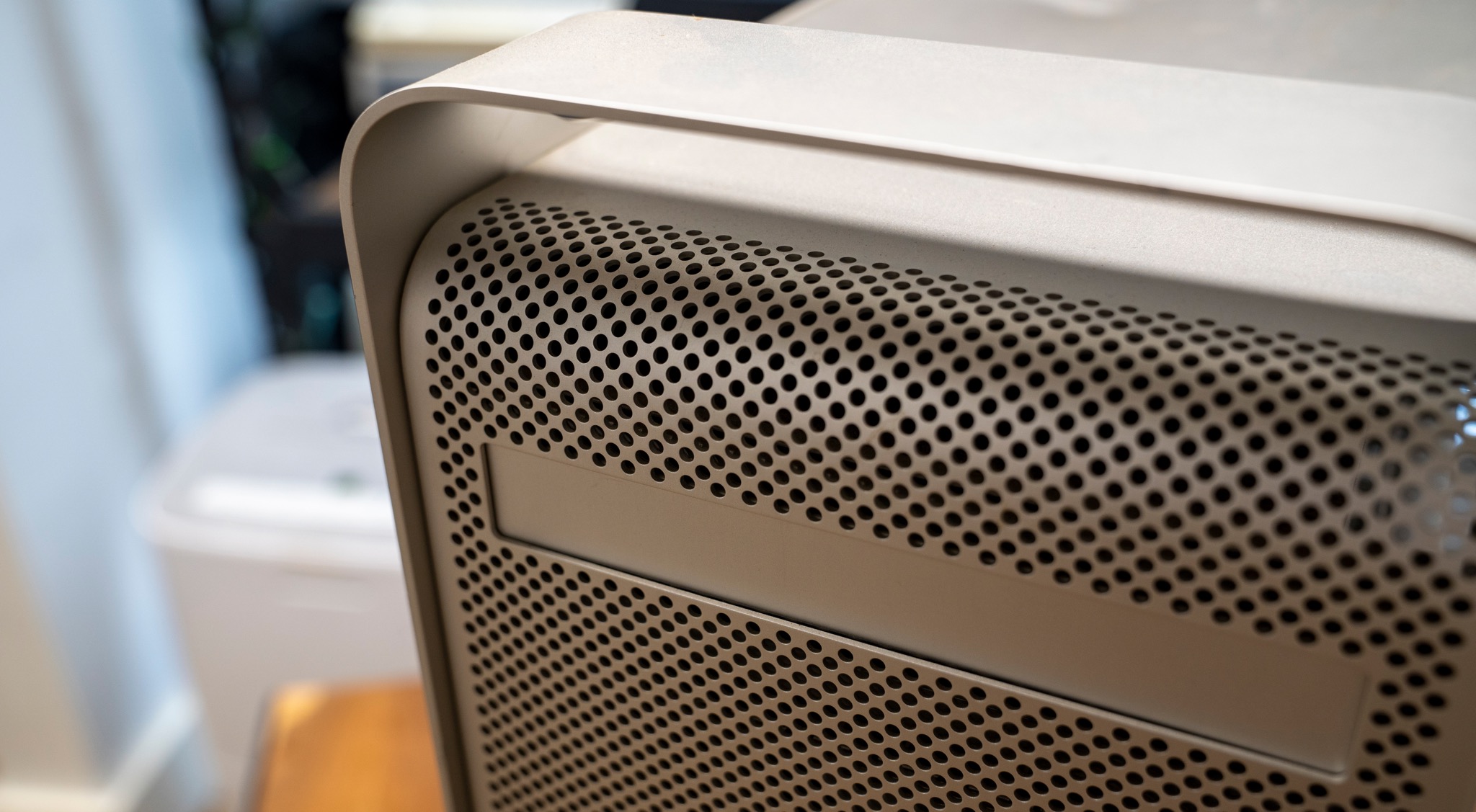

2003 June: Initial release at speeds of SP 1.6, SP 1.8, DP 2.0 GHz.
#Mac power g5 mac
Due to its 64-bit processor (and 42-bit MMU), the final revision of the Power Mac G5 can hold 16 GB of Dual-Channel DDR2 PC4200 RAM using eight memory slots, with support for ECC memory.
#Mac power g5 pro
The processor at the heart of the Power Mac G5 has a " superscalar, superpipelined" execution core that can handle up to 216 in-flight instructions, and uses a 128-bit, 162-instruction SIMD unit ( AltiVec).Īll modern 32-bit x86 processors since the Pentium Pro have the Physical Address Extension (PAE) feature, which permits them to use a 36-bit physical memory address to address a maximum of 2 36 bytes (64 gigabytes) of physical memory, while the PowerPC 970 processor is capable of addressing 2 42 bytes (4 terabytes) of physical memory and 2 64 bytes (16 exabytes) of virtual memory. These result in a total bandwidth of up to 20 GB/s. Each processor in the Power Mac G5 has two unidirectional 32-bit pathways: one leading to the processor and the other from the processor. The Power Mac G5 line in 2006 consisted of three, dual-core PowerPC G5 configurations, which can communicate through its HyperTransport at half its internal clock speed. Apple refers to the dual-core PowerPC 970MP processors as either the "G5 Dual" (for single-socket, dual-core configurations), or Power Mac G5 Quad (for dual-socket, four-core configurations). Subsequent revisions of the "G5" processor have included IBM's PowerPC 970FX (same basic design on a 90 nm process), and the PowerPC 970MP (essentially two 970FX cores on one die). CMOS 9S is the combination of SOI, low-k dielectric insulation, and copper interconnect technology, which were invented at IBM research in the mid-1990s. The original PowerPC 970 had 50 million transistors and was manufactured using IBM CMOS 9S at 130 nm fabrication process. IBM invested over $3 billion US dollars in a new lab to produce these large, 300 mm wafers." This lab was a completely automated facility located in East Fishkill, New York, and figured heavily in IBM's larger microelectronics strategy.

Kelly, "The goal of this partnership is for Apple and IBM to come together so that Apple customers get the best of both worlds, the tremendous creativity from the Apple corporation and the tremendous technology from the IBM corporation. At the Power Mac G5's introduction, Apple announced a partnership with IBM in which IBM would continue to produce PowerPC variants of their POWER processors. The PowerPC G5 (called the PowerPC 970 by its manufacturer, IBM) is based upon IBM's 64-bit POWER4 microprocessor. The inside of an air-cooled dual-processor 2003 model The computer was soon dismantled and replaced with a new cluster made of an equal number of Xserve G5 rack-mounted servers, which also used the G5 chip running at 2.3 GHz. The supercomputer managed to become one of the top five supercomputers that year. supercluster) known as System X, consisting of 1100 Power Mac G5 towers operating as processing nodes.
#Mac power g5 mac os x
Steve Jobs stated during his keynote presentation that the Power Mac G5 would reach 3 GHz "within 12 months." This would never come to pass after three years, the G5 only reached 2.7 GHz before it was replaced by the Intel Xeon-based Mac Pro, which debuted with processors running at speeds of up to 3 GHz.ĭuring the presentation, Apple also showed Virginia Tech's Mac OS X computer cluster supercomputer (a.k.a. Although somewhat larger than the G4 tower it replaced, the necessity for a complex cooling system meant that the G5 tower had room inside for only one optical drive and two hard drives. Officially launched as part of Steve Jobs' keynote presentation at the Worldwide Developers Conference in June 2003, the Power Mac G5 was introduced with three models, sharing the same physical case, but differing in features and performance. The Mac Pro retained a variation of the G5's enclosure design for seven more years, making it among the longest-lived designs in Apple's history. Three generations of Power Mac G5 were released before it was discontinued as part of the Mac transition to Intel processors, making way for its replacement, the Mac Pro. It was also the first desktop computer from Apple to use an anodized aluminum alloy enclosure, and one of only three computers in Apple's lineup to utilize the PowerPC 970 CPU, the others being the iMac G5 and the Xserve G5. When introduced, it was the most powerful computer in Apple's Macintosh lineup, and was marketed by the company as the world's first 64-bit desktop computer. from 2003 to 2006 as part of the Power Mac series.

#Mac power g5 series
The Power Mac G5 is a series of personal computers designed, manufactured, and sold by Apple Computer, Inc.


 0 kommentar(er)
0 kommentar(er)
